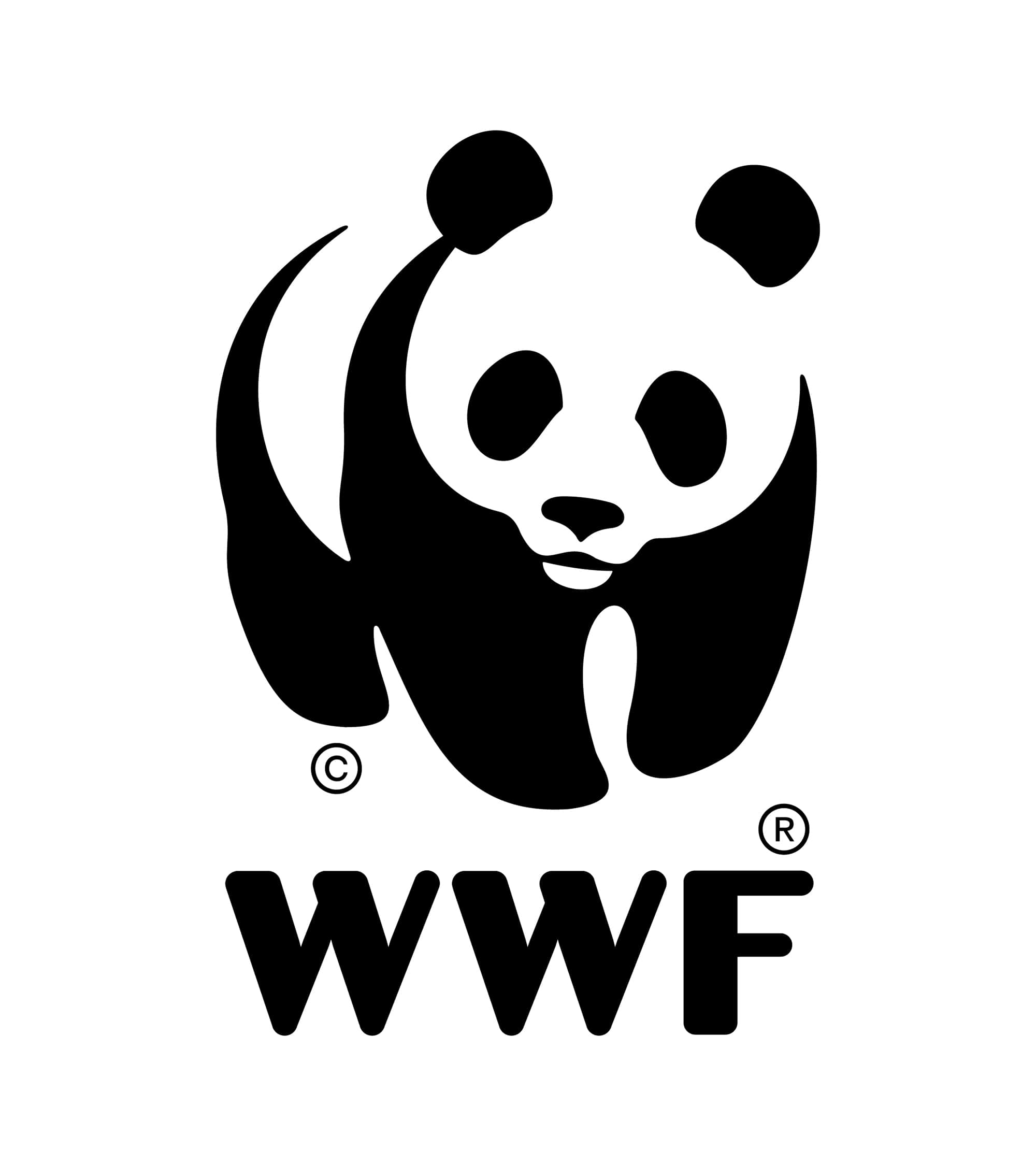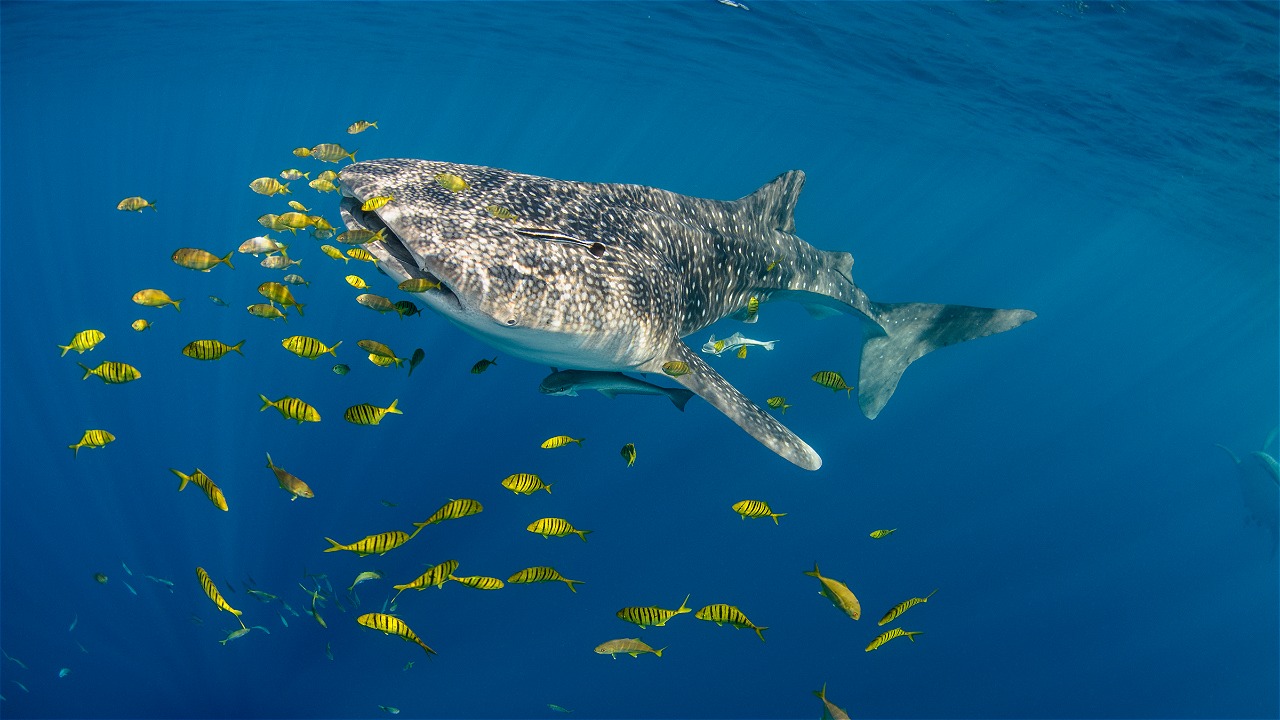CONNECTING THE DOTS OF THE GENTLE GIANTS
Whale sharks (Rhinocodon typus) have been known to occur in Indonesian waters. Media reported their interaction with fishermen in coastal waters in East Java and East Flores, resulted in some mortality caused by entanglements in fishing nets. In Cendrawasih Bay of West Papua, observations of whale sharks (locally known as Gurango Bintang) have increased during the past several years correlative with the local establishment of lift net (i.e., bagan) fisheries which target small schooling anchovies. The bagan fishermen also feed these fishes to the whale sharks and resulting in the sharks lingering near the bagans for several hours and can be easily observed and closely approached. This unique interaction of whale sharks with Bagan has attracted many tourists to visit this area.
As an initial step in exploring a framework for local whale shark based ecotourism in the Cendrawasih Bay National Park, WWF Indonesia and Teluk Cendrawasih National Park Authority with technical assistance from whale shark scientist, Dr. Brent Steward from Hubbs Seaworld Research Institute (HSWRI, San Diego), started to assess its potential long term benefits and consequences. We intend to address some important basic questions including:
- Are whale sharks present year round in this area?
- If they leave the area for any period of time, where to they range?
- What are the important foraging areas (geographic and vertical) for whale sharks in the area?
- What are the local and regional issues that may threaten the vitality of whale sharks that appear in the Cendrawasih Bay?
- What are the potential direct and indirect impacts of the bagan fisheries and the emerging whale shark ecotourism activities on the behaviors and health of the local and regional whale shark assemblage?.
This scientific information will be used for development of management and protection strategies at local (Cendrawasih Bay NP), national and regional level.
As whale sharks are known to have a wide range of dispersal and also consider as migratory species (like sea turtle), we use telemetry technique (satellite tracking) to observe their movement and behaviors in order to answer the above questions. We started to deploy a satellite linked radio transmitter on to one male whale shark in May 2011. The tag detached or was removed (accidentally or perhaps intentionally) about 13 days after it was attached. The ambient light level data that the tag measured, stored, and then transmitted to the Argos Data Collection and Location Service (DCLS) indicated that the shark (named Guillermo) was highly mobile and travelled a minimum geographic distance of around 690 nautical miles.
Recently, in November 2011, with generous logistical support from Conservation International, our Bird’s head program partner, 5 more whale sharks were tagged with pop-up archival satellite-linked radio transmitters (PATs) in two days near the same location where Guillermo was tagged in May 2011.. Four of the tags (89372, 89374, 89382, 89385) are programmed to release from the sharks about 200 days after they were tagged whereas the fifth tag (80183) is programmed to detach in about 12 months.
While these tags remain attached to the sharks, they will record and store measurements of ambient light, water depth, and water temperature. After the tags detach they will rise to the sea-surface and then begin transmitting the stored measurements to earth –orbiting satellites in the Argos DCLS system until the transmitter batteries expire (about 7-10 days after detachment). The remotely recovered data on daylight will be used to reconstruct the geographic movements of the sharks from estimates of day-length (to derive latitude) and local apparent noon (to derive longitude). The measurements of depth will be used to reconstruct diving patterns and use of vertical habitats with the water temperature data providing some proxy of oceanographic environmental conditions.
This study is in collaboration with HUBBS- Sea world Research Institute-San Diego, USA with support from WWF DK and tag donation from Conservation International.
Writing by: Creusa Hitipeuw (chitipeuw@wwf.or.id)

